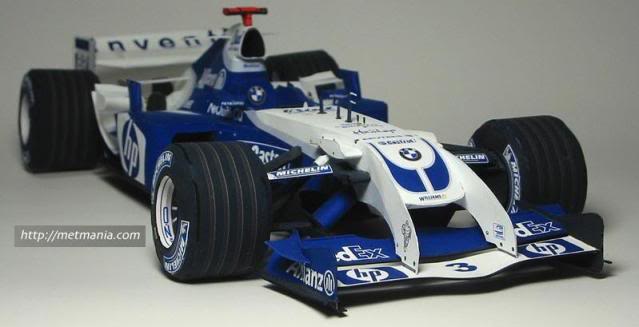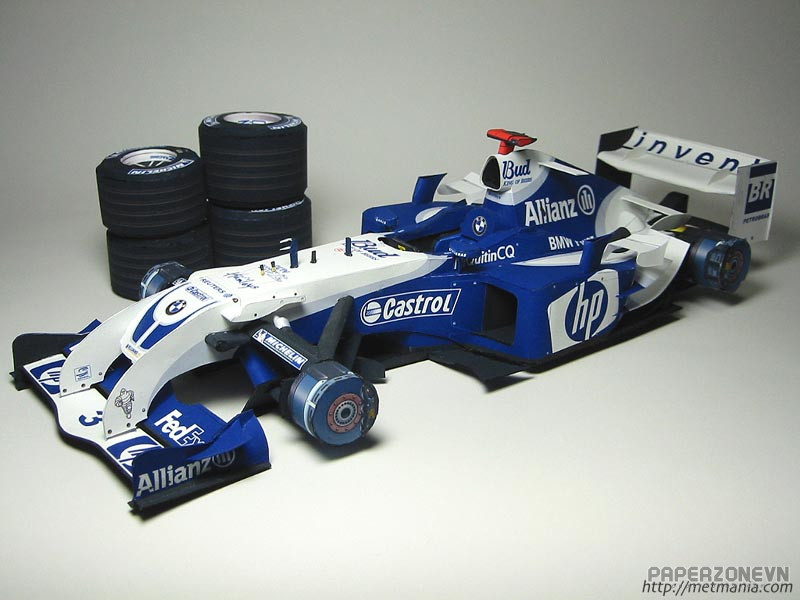- Thumbnail
-

- Resources
- metmania.com
- Author
- Metmania
- Printed File Format
- Page(s)
- 6
- Instruction Format
F1 Williams FW26 papercraft
Head supervised the car with the aim of being on the pace immediately, whilst his design team came up with a revolutionary aerodynamics package. The car featured a radical front section, nicknamed the'Walrus nose'. It featured a short, stubby nosecone connected to the front wing by sloping vertical spars which allowed more airflow to the underside of the car. In an effort to maximise the airflow, the front suspension was designed around the twin keel principle, pioneered by Sauber and also used by McLaren and Jordan.


Head supervised the car with the aim of being on the pace immediately, whilst his design team came up with a revolutionary aerodynamics package. The car featured a radical front section, nicknamed the'Walrus nose'. It featured a short, stubby nosecone connected to the front wing by sloping vertical spars which allowed more airflow to the underside of the car. In an effort to maximise the airflow, the front suspension was designed around the twin keel principle, pioneered by Sauber and also used by McLaren and Jordan.


Sponsored: Google Advertising


 buồn thật,nhưng vẫn cố làm thử,bác hì ....
buồn thật,nhưng vẫn cố làm thử,bác hì ....